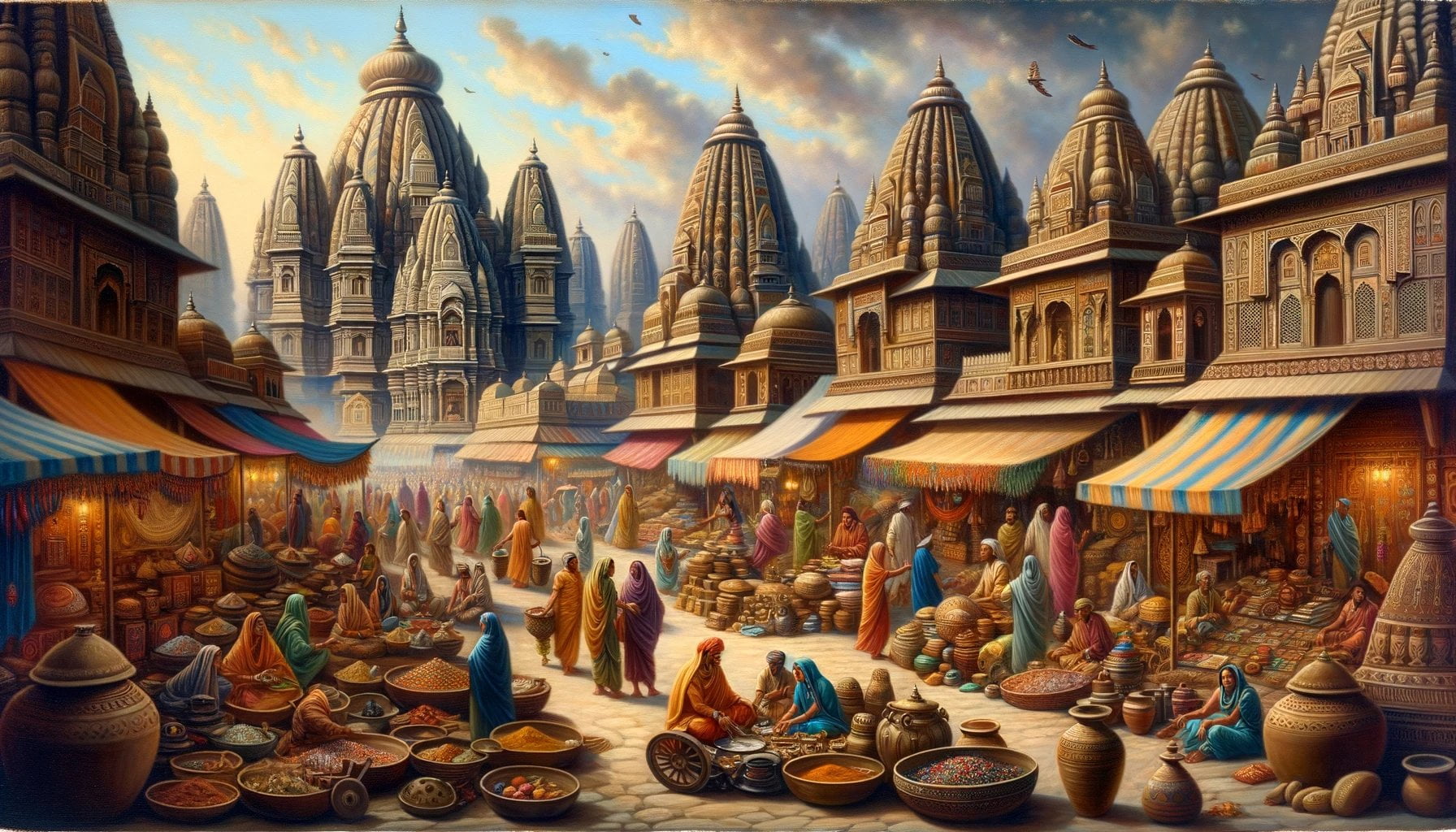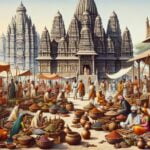Unraveling Ancient India’s Government: Insights into Governance Structures takes readers on a captivating journey through the pages of history, from the Arrival of the Aryans during the Vedic Period [1500 BCE] to the transformative reigns of the Mauryan Empire [322 BCE] and Gupta Empire [320 CE]. As an experienced historian specializing in ancient civilizations, I bring a wealth of knowledge and meticulous research to shed light on the intricate tapestry of governance in ancient India. With a focus on political systems, administrative frameworks, and ruling dynasties, this article offers a comprehensive understanding of how ancient India’s government functioned, providing readers with a nuanced perspective on statecraft and enduring legacies. Through extensive analysis of historical texts, archaeological discoveries, and inscriptions, join me as we uncover the fascinating secrets of ancient India’s governance structures.

Key Takeaways:
- Ancient India had a government system based on monarchy, with a king or leader as the head of administration and the state.
- The government structure evolved from a simple tribe organization to a complex system with the rise of empires.
- The government had three components: legislative, executive, and judiciary, with elements of modern government and democracy.
- The legislative branch was responsible for making laws, the executive branch implemented and enforced the laws, and the judiciary branch ensured justice and resolved conflicts.
- The government played a crucial role in maintaining order and ensuring the well-being of society.
- Additional sources for learning about ancient Indian government include Cultural India and World History Encyclopedia.
Government Ancient India
Ancient India’s government was a complex and evolving structure that played a crucial role in maintaining order and ensuring the well-being of society. Let’s delve into the fascinating governance systems of ancient India and gain insights into its intricate mechanisms.
Monarchy and Council of Ministers
At the core of the government in ancient India was the concept of monarchy. A king or leader served as the head of administration and the state. The king would appoint a council of ministers or helpers to govern different areas or functions of society. This system began as a simple tribal organization but grew more complex and elaborate as large kingdoms and republics emerged.
Three Components of Hierarchy
The ancient Indian government consisted of three components of hierarchy: legislative, executive, and judiciary. These components exhibited elements of modern government and democracy.
– The legislative branch was responsible for making laws that shaped the society and addressed the needs of the people.
– The executive branch took charge of implementing and enforcing these laws, ensuring their practical application.
– The judiciary branch played a crucial role in ensuring justice and resolving conflicts that arose within society.
Evolution of Government Structure
The government structure in ancient India evolved significantly over time. Initially, it was relatively simple, with a tribal chief appointing helpers to oversee the smooth functioning of society and address people’s grievances. However, as different empires rose and fell, the government took on a more sophisticated and intricate form, adapting to the changing dynamics of society.
Sources for Further Exploration
To learn more about the ancient Indian government and its various intricacies, you can visit reputable sources such as Cultural India and World History Encyclopedia. These resources provide valuable insights and comprehensive information on the topic.
In conclusion, the governance structure of ancient India was a fascinating tapestry woven with monarchy, legislative, executive, and judiciary branches. It laid the foundation for modern government systems and played a crucial role in maintaining order and promoting societal well-being. Exploring the intricacies of ancient India’s government opens a window into a bygone era, offering valuable lessons and insights for contemporary governance practices.
Government in ancient India was a complex and intriguing system that played a crucial role in shaping the society. If you want to delve deeper into the political aspects of this historical era, click here to explore the politics of ancient India. Politics Ancient India
[Mauryan Empire [322 BCE]]
The Mauryan Empire, established in 322 BCE, was a powerful and highly organized autocracy that shaped ancient India’s governance structure. Let’s delve into the fascinating world of the Mauryan government and unravel its intricate mechanisms.
The Supreme Authority:
At the heart of the Mauryan Empire was the king, who held supreme authority and was assisted by a council of ministers known as the Mantri Parishad (unacademy.com). Together, they governed the vast empire and made crucial decisions that influenced the lives of its subjects.
Efficient Bureaucracy:
To ensure effective governance, the Mauryan Empire adopted a bureaucratic system that mirrored its well-structured organization. This system, detailed in the Artha-shastra, a treatise on political economy, served as a guidebook for the Mauryan administration (unacademy.com).
Provincial Governance:
The Empire was divided into four provinces, each governed by a provincial governor. These provinces, namely Tosali, Ujjain, Suvarnagiri, and Taxila (gpkmauryaworldhistsummative.weebly.com), played a crucial role in maintaining order and facilitating the management of the vast empire.
Standing Army and Civil Service:
The Mauryans boasted a well-disciplined standing army and a dedicated civil service. The army ensured the protection of the empire’s borders and upheld the rule of law, while the civil service carried out administrative functions, implementing the policies and orders of the king and his council of ministers (sage-advice.com).
The Mauryan Empire’s government structure, characterized by the supremacy of the king, a well-oiled bureaucracy, and efficient provincial governance, laid the foundation for ancient India’s governance systems. Through this framework, the Mauryan Empire maintained order, promoted societal well-being, and left a lasting historical legacy.
Key Takeaways:
- The Mauryan Empire, established in 322 BCE, was a centralized and hierarchical monarchy.
- The king held supreme authority and was assisted by a council of ministers known as the Mantri Parishad.
- The Empire was divided into four provinces, each governed by a provincial governor.
- The Mauryan government employed a bureaucratic system based on the Artha-shastra, a treatise on political economy.
- The Empire maintained a standing army and civil service, ensuring protection and efficient administration.
Gupta Empire [320 CE]
The Gupta Empire, which thrived from 320 CE to around 550 CE, is often regarded as the Golden Age of India. This era witnessed remarkable advancements in various fields, including arts, architecture, sciences, religion, and literature. At the heart of this flourishing civilization was the government structure of the Gupta Empire.
Government Structure and Administration
The government of the Gupta Empire operated with a certain degree of decentralization. While the central authority held significant power, local authorities, social groups, and influential trade guilds also retained autonomy. This approach allowed for diverse local variations and fostered a sense of tolerance within the empire.
The Gupta Empire was divided into provinces, each governed by high imperial officers or even members of the royal family. The local governors enjoyed a level of independence, which differed from the more centralized governance of the preceding Mauryan Empire. This decentralized administration encouraged the participation of local leaders and created a mosaic of power centers within the empire.
Tolerance and Religious Pluralism
One notable aspect of the Gupta Empire’s governance was its tolerance toward different religions. Though the Gupta rulers were predominantly Hindu, they displayed openness toward other faiths such as Buddhism and Jainism. This atmosphere of religious pluralism allowed for a diverse and harmonious society to thrive.
Cultural and Scientific Advancements
The prosperity of the Gupta Empire paved the way for a vibrant cultural and scientific renaissance. It became a period of remarkable achievements and breakthroughs in various fields. Scholars, artists, and intellectuals flourished during this time, contributing to India’s rich heritage and intellectual legacy.
Key Takeaways:
- The Gupta Empire, which lasted from 320 CE to around 550 CE, is often considered the Golden Age of India.
- The government structure exhibited a degree of decentralization, granting autonomy to local authorities and trade guilds.
- The empire was divided into provinces governed by high imperial officers, allowing for a varied and diverse administration.
- The Gupta rulers showcased religious tolerance, welcoming Hinduism, Buddhism, and Jainism.
- The Gupta Empire’s prosperity fostered a flourishing cultural, artistic, and scientific climate, resulting in numerous achievements and advancements.
Sources:
– Gupta Empire | Encyclopedia.com
– Gupta dynasty | History, Achievements, Founder | Britannica

FAQ
Q1: What was the governing structure of ancient India based on?
A1: The governing structure of ancient India was based on monarchy, with a king or leader serving as the head of administration and the state.
Q2: What were the three components of the ancient Indian government?
A2: The three components of the ancient Indian government were the legislative branch, responsible for making laws; the executive branch, responsible for implementing and enforcing laws; and the judiciary branch, responsible for ensuring justice and resolving conflicts.
Q3: How did the government structure in ancient India evolve over time?
A3: The government structure in ancient India started as a tribal organization and became more complex and elaborate with the establishment of large kingdoms and republics.
Q4: What was the role of the Mauryan Empire in ancient India’s government?
A4: The Mauryan Empire, which ruled over most of India from the 4th to the 2nd century BCE, had a centralized and hierarchical monarchy. The king was the supreme authority and was assisted by a council of ministers. The empire was divided into provinces, each governed by a provincial governor.
Q5: How did the Gupta Empire differ from the Mauryan Empire in terms of governmental administration?
A5: The Gupta Empire had a more decentralized government compared to the Mauryan Empire. Local authorities, social groups, and trade guilds retained significant autonomy. The empire was divided into provinces, which were governed by high imperial officers or members of the royal family.
- SYBAU See You Baby Meaning: Gen Z Slang Evolves - July 1, 2025
- Unlock Your Inner Youth: Lifestyle Secrets for a Vibrant Life - July 1, 2025
- Decode SYBAU Meaning: Gen Z Slang Explained - July 1, 2025






